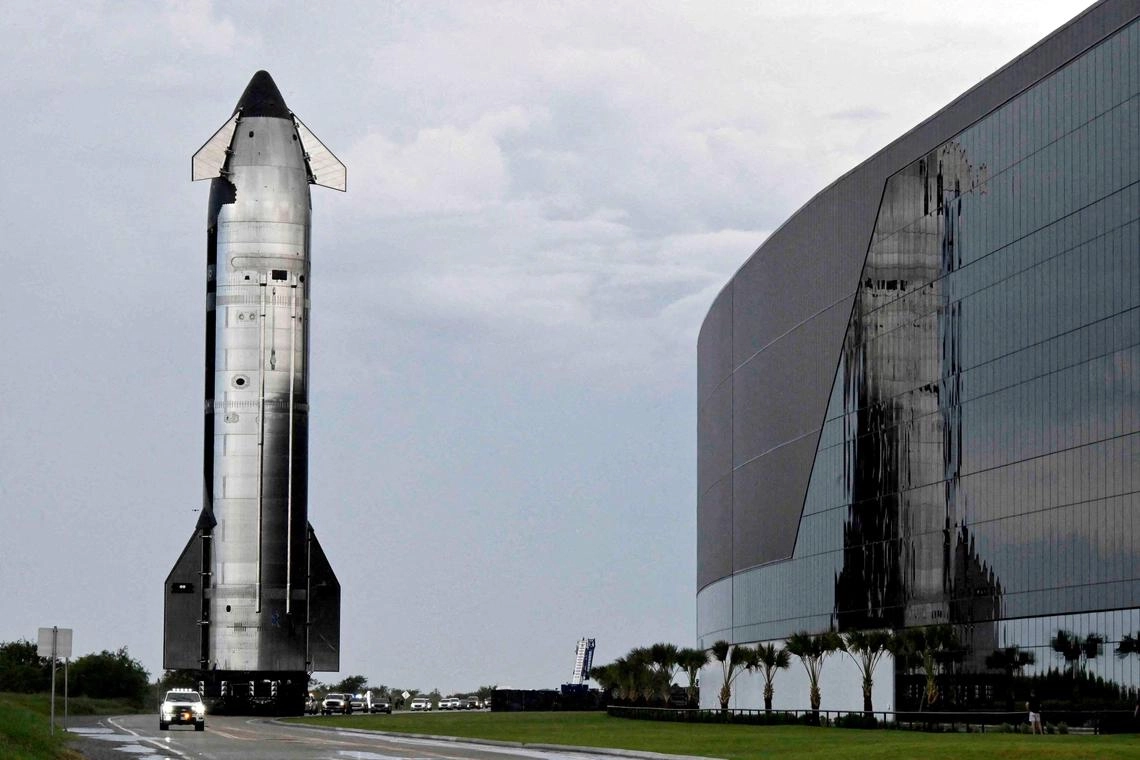BOCA CHICA, Texas Billionaire Elon Musks SpaceX is set to launch its massive Starship rocket for a tenth time from Texas on Aug 24 to achieve several long-sought development milestones missed due to past tests ending in early failures.
The 71m tall Super Heavy booster and its 52m tall Starship upper half sat stacked on a launch mount at SpaceXs Starbase rocket facilities ahead of an expected 7.30pm lift-off time.
Mr Musk is expected to provide an update on Starships development progress prior to the rockets launch on Aug 24.
Development of SpaceXs next-generation rocket, the centre of the companys powerful launch business future and Mr Musks Mars ambitions, has faced repeated hiccups this year as Nasa hopes to use the rocket as soon as 2027 for its first crewed
moon landing
since the Apollo programme.The future of SpaceXs Starlink satellite internet business, a major source of revenue for the company that has been deployed by SpaceXs workhorse Falcon 9, is also tied to Starships success.
Mr Musk is keen on using Starships greater lift strength to loft into orbit larger Starlink satellites designed to expand the constellations bandwidth.
In 2025, two Starship testing failures early in flight, another failure in space on its ninth flight, and a
massive test stand explosion
in June that sent debris flying into nearby Mexican territory have tested SpaceXs test-to-failure development approach.Still, the company has continued to swiftly produce new Starships for test flights at its sprawling Starbase production facilities.
Those setbacks underscore the technical complexities of Starships latest iteration, packed with far more capabilities such as increased thrust, a potentially more resilient heat shield and stronger steering flaps crucial to nailing its atmospheric re-entry, key traits for Starships rapid reusability that Mr Musk has long pushed for.
Around sunset on Aug 24, the stacked system will blast off from Texas before its Starship upper stage separates from the Super Heavy booster dozens of kilometres in altitude.
Super Heavy, which has returned for a landing at its launch pad in giant mechanical arms in past tests, will instead target the Gulf of Mexico for a soft water landing in order to test a backup engine configuration.
Meanwhile, Starship will briefly ignite its own engines to blast further into space, where it will attempt to release its first batch of mock Starlink satellites and reignite an engine while on a suborbital path around the planet.
About an hour into the mission, the ship will then target an atmospheric re-entry over the Indian Ocean, a crucial flight phase that will test a variety of prototypical heat shield tiles and engine flaps designed to endure a barrage of blazing heat that has largely shredded the rockets exterior during past tests.
Starships re-entry profile is designed to intentionally stress the structural limits of the upper stages rear flaps while at the point of maximum entry dynamic pressure, SpaceX said on its website. REUTERS




